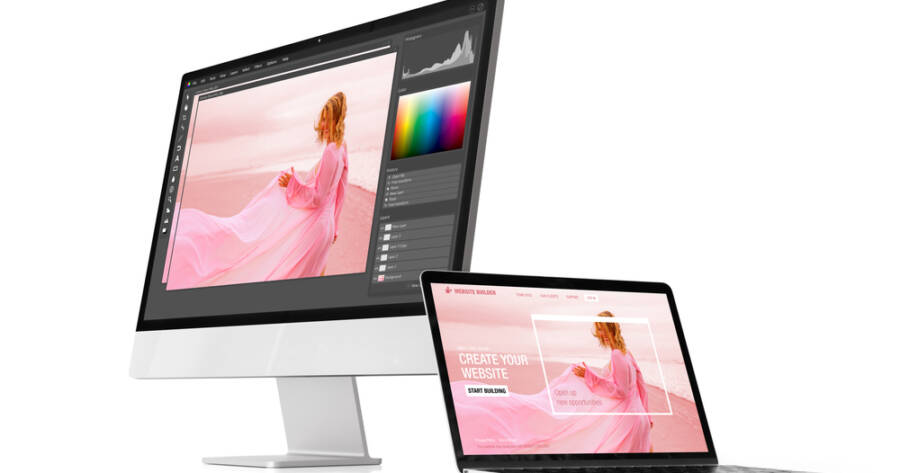Venturing into graphic design can be both an exhilarating and fulfilling journey, offering a blend of creativity and technical prowess. Whether you’re looking to pursue it as a career or a hobby, starting with a clear roadmap may ease your entry into this vibrant field. From understanding design fundamentals to choosing the right software and building a compelling portfolio, these initial steps are crucial. By navigating these aspects with curiosity and commitment, you can unlock a world of creative possibilities.
Understanding Basic Design Principles
Before diving into tools and artistry, it’s essential to understand the basic principles of graphic design, as they serve as the foundation for creating effective visuals. Key concepts include balance, contrast, alignment, and hierarchy. Mastering these principles might help in organizing your designs and enhancing their visual impact.
Typography, the art of arranging type, plays a significant role in design. Good typography choices can enhance readability and set the tone of your design. Similarly, understanding color theory helps in selecting colors that evoke desired emotions or highlight specific design elements. Gaining knowledge in these areas is fundamental for creating harmonious and effective designs.
Selecting the Appropriate Design Software
A variety of design software options cater to different levels of expertise and project requirements. Adobe Creative Cloud is a popular choice among professionals, offering powerful tools like Illustrator, Photoshop, and InDesign. While these programs are robust, they may require time to learn and can be pricey for beginners.
Thankfully, there are cost-effective and user-friendly alternatives like GIMP, Canva, and Affinity Designer. These programs provide ample functionality for creating professional-quality designs without the steep learning curve or price tag. Exploring various software can help you find a platform that fits your style and needs. Many of these tools also offer tutorials and active communities to support your learning journey.
Hands-On Practice and Skill Refinement
Hands-on practice is vital for developing graphic design skills. Start by working on simple projects like designing posters, business cards, or social media graphics. As you gain confidence, gradually tackle more complex designs that challenge your creativity and technical skills.
Participating in design challenges or joining online design communities can provide motivation and inspiration. Constructive feedback from peers might cultivate growth by offering new perspectives and critiques that push your skills further. Continuous learning through practice enhances your capabilities and gradually refines your unique design style.
Leveraging Online Learning Resources
The internet is a treasure trove of resources for budding graphic designers, providing access to an array of courses and tutorials. Platforms like Coursera, Skillshare, and Udemy offer structured programs covering everything from introductory design principles to advanced digital artistry. These courses often feature industry professionals and can be tailored to individual learning paces.
YouTube channels and design blogs are also invaluable resources for free, high-quality tutorials and industry insights. Subscribing to newsletters or design publications can keep you abreast of current trends and technological advancements. Engaging with these online resources empowers you with knowledge and expands your understanding of graphic design’s evolving landscape.
Building a Portfolio to Showcase Your Work
A well-curated portfolio is a crucial tool for aspiring graphic designers, showcasing your skills, creativity, and experience. Aim to include a range of projects that demonstrate your versatility across different design areas and industries. This could involve branding, web design, typography, or print production.
As you curate your portfolio, consider presenting it online where it can reach potential clients or employers globally. Platforms like Behance, Dribbble, or even personal websites offer space to exhibit your body of work in a visually appealing manner. A strong portfolio not only highlights your talent but also narrates your design journey, helping you make a lasting impression in the industry.
Networking and Engaging with the Design Community
Joining the graphic design community can provide support, inspiration, and collaboration opportunities. Networking allows you to connect with like-minded individuals, industry professionals, and potential mentors. Attending design events, workshops, or online webinars can help you stay informed and connected within the field.
Engaging with peers on platforms like LinkedIn or participating in local design groups can foster valuable relationships. These connections might open doors to job opportunities, collaborations, or simply be a source of inspiration. Building a supportive network enhances your design practice and immerses you in the vibrant culture of the graphic design industry.
Embark on Your Design Journey
Embarking on a career in graphic design offers a multitude of opportunities to express yourself creatively while solving real-world problems. By understanding design principles, selecting the right tools, and actively refining your skills, you lay a robust foundation for success.
Curating an impressive portfolio and networking within the design community can further the impact of your efforts. With dedication and an openness to learning, you can confidently navigate the dynamic world of graphic design. Chart your unique path in this exciting field, and uncover the endless possibilities than can await you as you grow and evolve.





